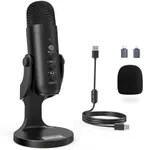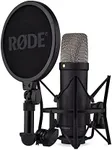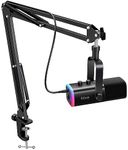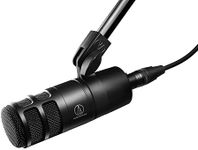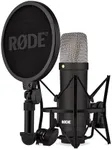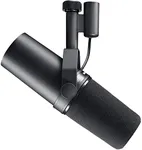Buying Guide for the Best PC microphones
Choosing the right PC microphone can make a big difference in how you sound during calls, recordings, or streams. The best microphone for you depends on how you plan to use it—whether it's for casual chatting, professional meetings, podcasting, gaming, or music recording. Understanding the main features and how they relate to your needs will help you make a smart choice and avoid paying for things you don't need or missing out on important features.Microphone TypeMicrophones come in different types, mainly condenser and dynamic. Condenser microphones are sensitive and capture more detail, making them great for studio recording, podcasts, or voiceovers. Dynamic microphones are more rugged and handle loud sounds well, which is good for live streaming or environments with background noise. If you want clear, detailed sound and are in a quiet space, a condenser mic is a good pick. If you need something durable or will be in a noisy area, a dynamic mic might suit you better.
Connection TypePC microphones usually connect via USB or XLR. USB microphones are plug-and-play, easy to use, and work well for most people who want a simple setup for calls, streaming, or basic recording. XLR microphones require an audio interface or mixer and are typically used by professionals who want more control over sound quality. If you want convenience and simplicity, go for USB. If you plan to build a more advanced audio setup, consider XLR.
Polar PatternThe polar pattern describes how a microphone picks up sound from different directions. Cardioid mics pick up sound mainly from the front, which is ideal for solo use and reducing background noise. Omnidirectional mics capture sound from all around, useful for group calls or interviews. Some mics offer switchable patterns for flexibility. Choose cardioid for focused, single-person use, omnidirectional for group settings, and switchable if you want versatility.
Frequency ResponseFrequency response tells you the range of sounds a microphone can capture, from low bass to high treble. A wider frequency response means the mic can pick up more detail, which is important for music or high-quality voice recording. For voice calls or gaming, a standard range is usually enough. If you want your recordings to sound rich and natural, look for a microphone with a broad and flat frequency response.
Sensitivity and Gain ControlSensitivity refers to how well a microphone picks up quiet sounds. Some microphones also have built-in gain controls, letting you adjust how much sound is picked up. High sensitivity is good for soft voices or quiet environments, but can also pick up unwanted noise. Lower sensitivity is better for loud environments. If you want more control over your sound, look for a microphone with adjustable gain.
Mounting and AccessoriesConsider how the microphone is mounted—some come with stands, shock mounts, or pop filters. A good stand keeps the mic stable, a shock mount reduces vibrations, and a pop filter helps with harsh 'p' and 's' sounds. If you want a clean, professional sound or plan to move your mic around, these accessories can be very helpful. Think about your workspace and how you'll use the mic to decide which accessories you need.




